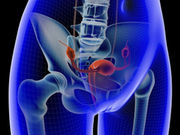HPV DNA testing recommended in all resource settings; HIV+ should undergo screening more often
TUESDAY, Oct. 25, 2016 (HealthDay News) — In a Clinical Practice Guideline published online Oct. 12 in the Journal of Global Oncology, recommendations are presented for the secondary prevention of cervical cancer.
Jose Jeronimo, M.D., from PATH in Seattle, and colleagues conducted a systematic review of existing guidelines to develop new recommendations for the secondary prevention of cervical cancer. Seven existing guidelines were identified and reviewed, and recommendations were adapted from the evidence base.
The researchers recommend human papillomavirus (HPV) DNA testing in all resource settings; while in basic settings, visual inspection with acetic acid may be used. The frequency of testing varies based on age range and setting. Visual assessment is recommended as triage for basic settings; genotyping and/or cytology are recommended in other settings. If abnormal triage results are present, treatment is recommended for basic settings; colposcopy is recommended in other settings. Cryotherapy or loop electrosurgical excision procedure are treatment options for basic settings; loop electrosurgical excision procedure (or ablation) is recommended for other settings. In all settings, 12-month post-treatment follow-up is recommended. HIV-positive women should be screened with HPV testing after diagnosis and be screened twice as often as the general population. In basic settings, screening is recommended six weeks postpartum; screening is recommended at six months in other settings.
“In basic settings without mass screening, infrastructure for HPV testing, diagnosis, and treatment should be developed,” the authors write.
Several authors disclosed financial ties to the pharmaceutical and health care industries.
Full Text
Copyright © 2016 HealthDay. All rights reserved.








